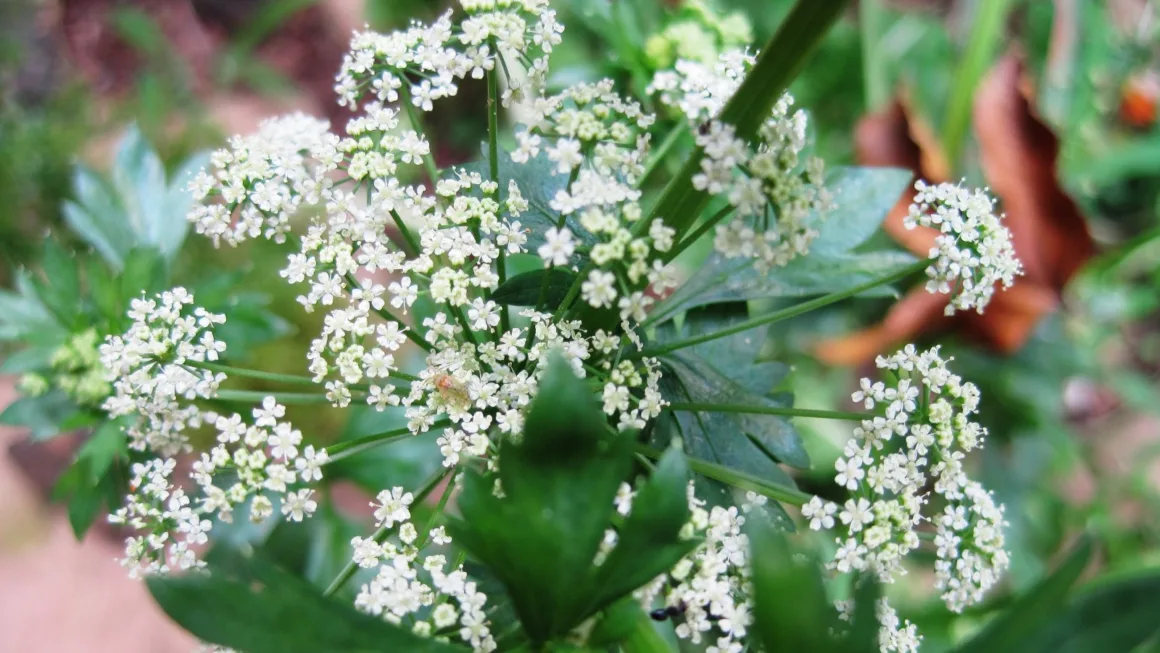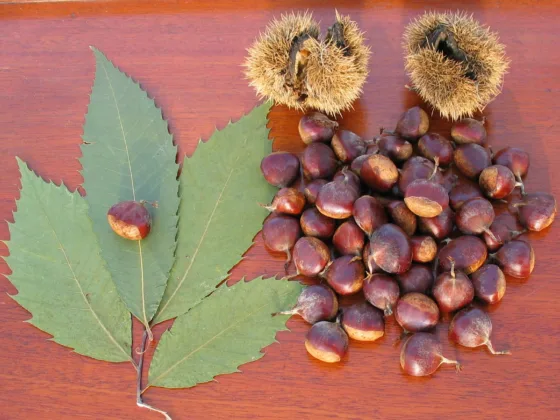Table of Contents Show
Have you ever walked through your yard and wondered if there’s more to it than just a beautiful landscape? Well, you’re in for a treat! Your very own backyard is a hidden treasure trove of edible plants that can add a whole new level of flavor to your meals.
From vibrant flowers to luscious greens, there’s an abundance of culinary delights just waiting to be discovered. So roll up your sleeves and get ready to transform your yard into a veritable feast for the senses!
1. Winecup Flowers: A Journey of Gastronomic Delight
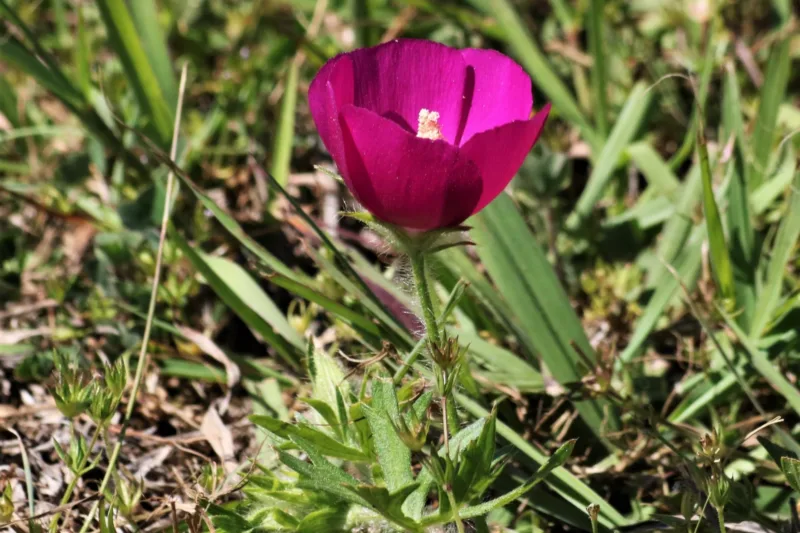
The Magic of Winecup
The delicate flavors of Winecup (Callirhoe involucrata) transport you to a realm of extraordinary taste experiences. Originating from the sun-kissed vineyards of the Mediterranean, this exquisite flower is more than just a visual delight. Its vibrant petals hold an abundance of flavors that can be creatively incorporated into various dishes.
Discovering the Art of Eating Winecup
So, how does one embark on this gastronomic adventure? The first step is to select the freshest winecup flowers, ensuring their petals are intact and free from any blemishes. Once you have these beauties in hand, the possibilities are endless.
The petals of winecup possess a subtle sweetness and a slightly tangy undertone, making them a versatile ingredient that can be used in both savory and sweet dishes. One popular way to enjoy winecup is by adding petals to salads, lending a burst of color and flavor to your greens.
For those with an adventurous palate, we recommend trying winecup petals in pasta dishes. Toss them in with your favorite pasta, along with some sautéed garlic and olive oil, and prepare to be amazed by the delicate flavors that infuse the dish. The petals can also be used as a garnish for soups, adding a touch of elegance to the bowl.
Exploring Winecup in Desserts
No culinary adventure is complete without indulging in the sweeter side of life. Winecup petals can elevate your desserts to a whole new level, adding a touch of sophistication and a hint of floral delight.
Imagine biting into a luscious chocolate mousse, only to discover the delicate crunch of winecup petals dancing on your taste buds. Sounds divine, doesn’t it? You can also infuse the petals into creams and custards, creating delectable treats that will leave your guests in awe.
And let’s not forget the art of mixology. Winecup petals can be used to garnish cocktails, imparting an intoxicating aroma and a visually stunning presentation. Your guests will be in awe as they sip their drinks, enveloped in the magical experience you’ve created.
Unleash Your Culinary Creativity with Winecup
Now that you’ve discovered the secrets of eating winecup, it’s time to unleash your culinary creativity. Explore new recipes, experiment with flavors, and let your taste buds be your guide. The world of Winecup is waiting to be explored, and with each bite, you’ll unlock a world of gastronomic delight.
2. Red Clover: How to Incorporate it into Your Diet
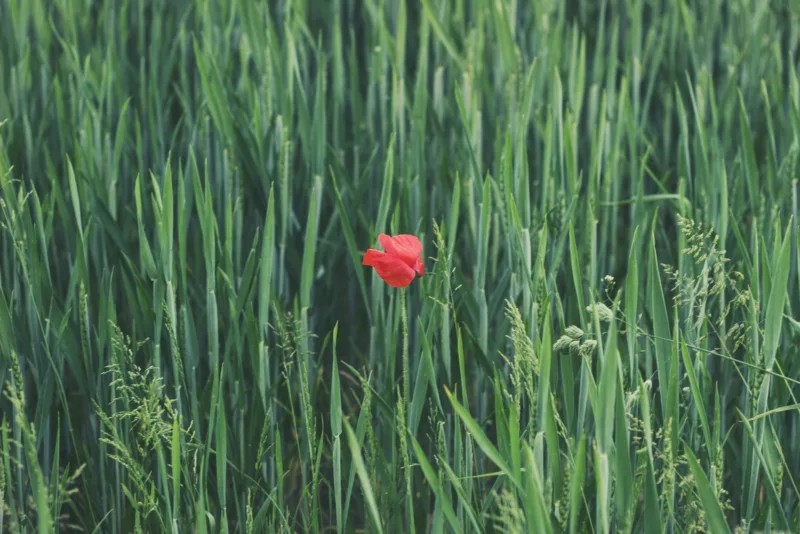
The Benefits of Red Clover
Red clover (Trifolium pratense) is a versatile herb that has been used for centuries due to its numerous health benefits. This vibrant plant is not only a beautiful sight in nature, but it also offers a wide range of potential advantages when consumed. From promoting heart health to supporting women’s reproductive health, red clover is a powerhouse of nutrients.
One of the key benefits of red clover is its ability to help balance hormones. It contains compounds called isoflavones, which are known to mimic the effects of estrogen in the body. This can be particularly beneficial for women experiencing menopause or menstrual irregularities. The isoflavones in red clover have also been linked to improving bone density and reducing the risk of osteoporosis.
Delicious Ways to Incorporate Red Clover into Your Diet
Now that you understand the incredible benefits of red clover, you might be wondering how to add it to your daily routine. Luckily, there are plenty of delicious and easy ways to incorporate this herb into your diet.
One popular method is to make a red clover infusion. Simply steep a handful of dried red clover flowers in hot water for about 10 minutes, strain, and enjoy. You can add a squeeze of lemon or a drizzle of honey for added flavor. This infusion can be enjoyed hot or cold and is a great way to start your day.
Another option is to incorporate red clover into your smoothies. Blend a handful of fresh or dried red clover leaves with your favorite fruits and vegetables to create a refreshing and nutrient-rich beverage. Red clover pairs well with berries, bananas, and leafy greens. The possibilities are endless!
Safety Precautions and Possible Side Effects
While red clover is generally safe for most people to consume, it’s always important to exercise caution, especially if you have any underlying health conditions or are taking medications. It’s recommended to consult with a healthcare professional before incorporating red clover into your diet.
Additionally, pregnant women and individuals with estrogen-sensitive conditions, such as certain types of cancer, should avoid red clover as it may interfere with hormonal balance.
Red clover is a remarkable herb that offers a plethora of health benefits. From balancing hormones to promoting heart health, this powerful plant should not be overlooked. By incorporating red clover into your diet in creative and delicious ways, you can unlock its full potential and reap the rewards it has to offer.
3. Dahlia: A Floral Feast for the Senses
The Allure of Dahlia
Dahlia (Dahlia spp.), a captivating flower known for its vibrant colors and intricate petals, is not just a feast for the eyes but also a delightful treat for the taste buds. In recent years, the culinary world has embraced the use of edible flowers, and Dahlia has quickly become a favorite among chefs and food enthusiasts.
With its mild flavor reminiscent of watercress and lettuce, Dahlia adds a unique touch to both sweet and savory dishes. It’s delicate petals and crisp texture make it a versatile ingredient that can be used in various culinary creations.
Unleashing the Flavorful Possibilities
When it comes to incorporating Dahlia into your culinary repertoire, the possibilities are endless. From simple salads to elaborate desserts, there are numerous ways to enjoy the floral flavors and vibrant hues of this beautiful flower.
One popular way to showcase the beauty of Dahlia is by using it as a garnish. Its vivid colors and intricate petals make for an eye-catching addition to any dish. Whether sprinkled on top of a salad, scattered over a cake, or used as a finishing touch on a seafood dish, Dahlia adds a touch of elegance and sophistication.
For those looking to explore the unique flavor of Dahlia, infusing it into oils, spoonfuls of vinegar, or syrups is a fantastic option. This allows the floral essence to permeate the ingredients, creating a subtle and fragrant taste that elevates any dish. Try drizzling Dahlia-infused oil over a fresh salad, or adding Dahlia-infused vinegar to marinades for a delightful twist.
Health Benefits and Cautions
Not only does Dahlia offer a culinary adventure, but it also provides a range of health benefits. Rich in vitamins, minerals, and antioxidants, Dahlia can boost your immune system, promote healthy digestion, and support overall well-being. Additionally, the vibrant colors of Dahlia indicate the presence of pigments that have been linked to reducing the risk of chronic diseases.
However, it’s important to note that not all Dahlia varieties are edible. Some species may cause allergic reactions or digestive discomfort. It is crucial to ensure that the Dahlia flowers you consume are specifically grown for culinary purposes and are free from pesticides or other harmful chemicals.
4. Creeping Charlie: Enjoy the Unique Flavor
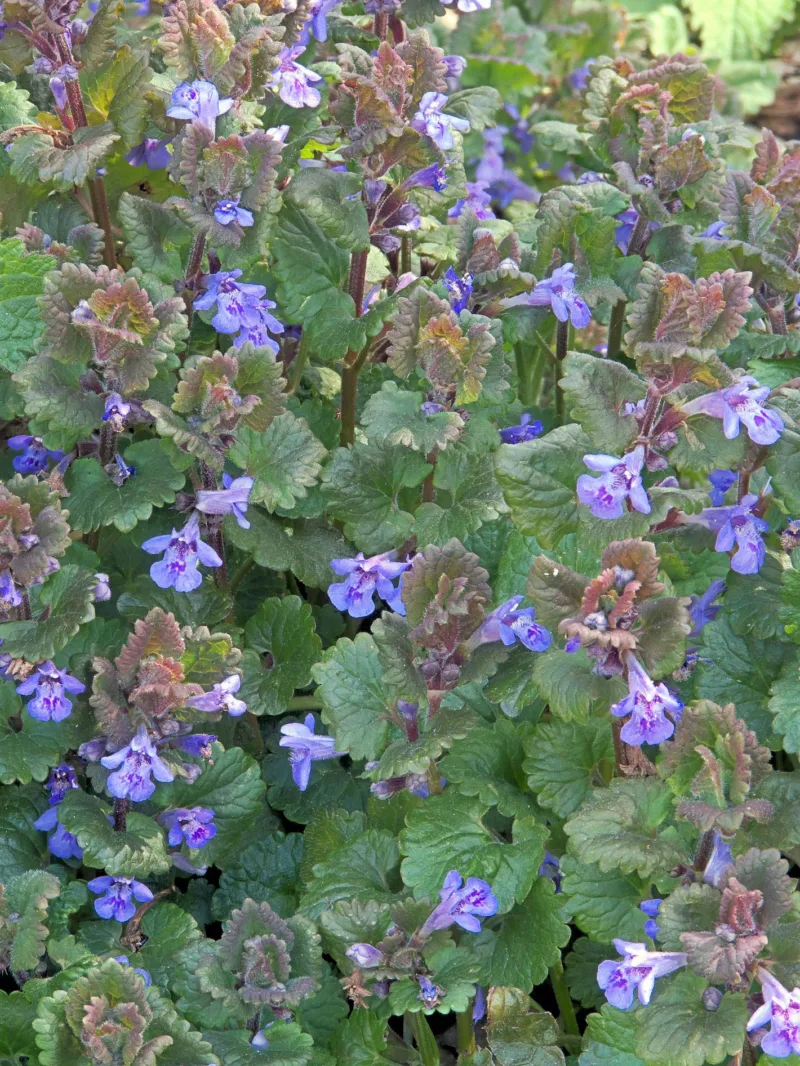
Despite its reputation as an invasive weed, this wild plant offers a delightful taste and a world of possibilities in the kitchen.
Creeping Charlie (Glechoma hederacea), also known as Ground Ivy, is a perennial herbaceous plant that belongs to the mint family. It can be found in various parts of North America and Europe, thriving in shady areas with moist soil. Its vibrant green leaves and delicate purple flowers make it easily recognizable.
Harvesting and Preparing Creeping Charlie
Before you embark on your culinary adventure with Creeping Charlie, it’s important to know how to properly harvest and prepare this unique ingredient. The best time to gather Creeping Charlie leaves is in the spring when the plant is young and tender. Simply snip off the top few inches of the plant, making sure to leave some leaves behind for regrowth.
Once you’ve harvested your Creeping Charlie, give it a good rinse with water to remove any dirt or debris. Afterward, pat it dry gently with a clean kitchen towel. Now you’re ready to incorporate this wild ingredient into your dishes!
Creative Ways to Enjoy Creeping Charlie
With its refreshing minty flavor, Creeping Charlie can be a versatile addition to sweet and savory dishes. Here are a few creative and delicious ways to enjoy this wild herb:
- Creeping Charlie Pesto: Add a twist to your traditional pesto recipe by substituting some of the basil with Creeping Charlie leaves. Blend it with garlic, pine nuts, Parmesan cheese, and olive oil for a vibrant and flavorful sauce that pairs perfectly with pasta or as a spread on crusty bread.
- Creeping Charlie Salad: Toss a handful of fresh Creeping Charlie leaves into your favorite salad mix for an extra burst of freshness. You can also combine it with other herbs like basil, parsley, and mint for a delightful herby salad.
- Creeping Charlie Infused Tea: Boil a few Creeping Charlie leaves in water to create a refreshing and aromatic tea. You can enjoy it hot or chill it in the refrigerator for a cool summer beverage. Add a squeeze of lemon or a drizzle of honey for an extra kick of flavor.
Remember, when foraging for Creeping Charlie, always make sure you are harvesting from an area free of pesticides and other harmful chemicals. It’s essential to practice sustainable foraging and respect nature while enjoying its bounties.
5. Cattail: A Unique Culinary Adventure
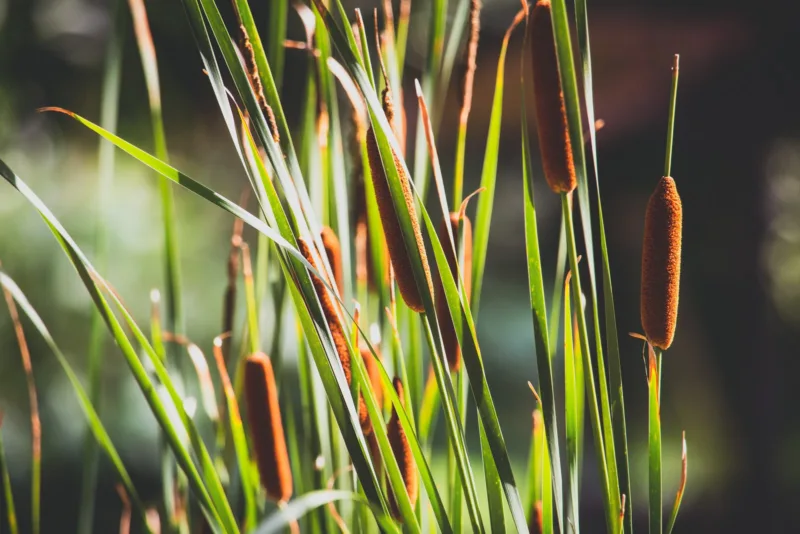
The Many Wonders of Cattail
When you think of delicious and nutritious foods, cattail might not be the first thing that comes to mind. However, this versatile plant has been a staple in the diets of various cultures around the world for centuries. With its abundance and numerous health benefits, it’s time to discover the delights of eating cattail!
Known scientifically as Typha, Cattail (Typhaceae spp.) is a tall, marsh-loving plant that can be found in wetland areas throughout North America and Europe. Both the leaves and the rhizomes (underground stems) of the plant are edible, making it a truly unique culinary experience.
The Benefits of Cattail
Not only is cattail delicious, but it also offers a wide range of health benefits. This incredible plant is packed with nutrients such as vitamins A, B, and C, as well as minerals like potassium, calcium, and magnesium. It’s also a great source of dietary fiber, which helps promote a healthy digestive system.
One of the standout benefits of cattail is its high protein content. It’s an excellent plant-based protein source, making it a great option for vegetarians and vegans. Additionally, cattail is low in fat and calories, making it a guilt-free addition to your diet.
Delicious Ways to Enjoy Cattail
Now that you know about the incredible benefits of cattail, it’s time to explore some mouthwatering ways to incorporate it into your meals.
- Cattail Shoots Salad: Start your culinary adventure with a refreshing cattail shoots salad. Harvest the tender shoots in the early spring and toss them with your favorite vinaigrette dressing. Add some cherry tomatoes, cucumbers, and a sprinkle of feta cheese for a burst of flavor.
- Cattail Rhizome Stir-Fry: For a savory and satisfying meal, try sautéing cattail rhizomes with garlic, ginger, and your choice of vegetables. Add a splash of soy sauce for a delicious Asian-inspired twist. Serve it over a bed of steamed rice for a complete and nutritious meal.
The Adventure Begins!
Embarking on a culinary adventure with cattail opens up a whole new world of flavors and possibilities. Whether you’re a seasoned chef or a curious food enthusiast, these unique recipes are sure to impress your taste buds and leave you wanting more.
So, what are you waiting for? Grab your foraging gear and head out to explore the wonders of cattail. It’s time to spice up your meals and embrace the excitement of trying something new.
6. Fireweed: How to Incorporate this Wildflower into Your Culinary Adventures
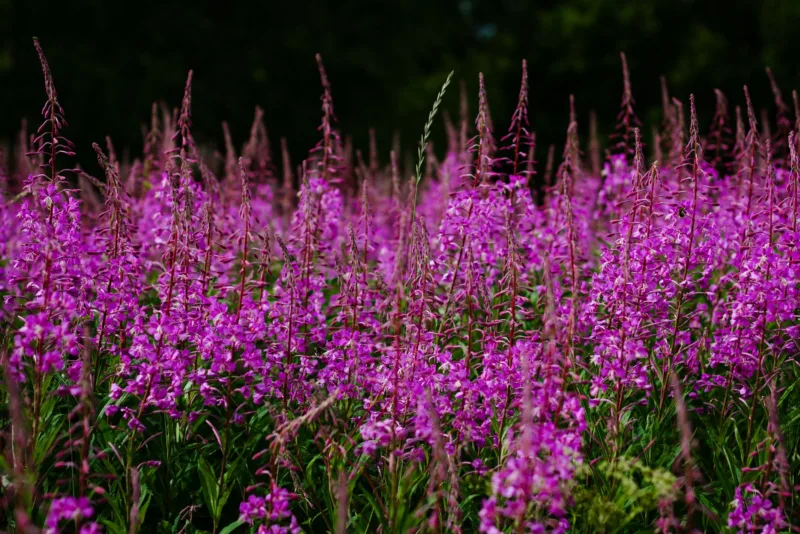
Unleashing the Flavorful Potential of Fireweed
Fireweed (Chamaenerion angustifolium), with its vibrant purple-pink flowers and tall stalks, is not just a sight to behold in nature but also a delicious wildflower that can add a unique twist to your culinary creations. Known for its delicate, sweet flavor, fireweed offers a range of possibilities in the kitchen. So, let’s explore how you can incorporate this wild gem into your culinary adventures and elevate your taste buds to new heights.
One of the simplest ways to enjoy fireweed is by using its petals in salads. The bright petals not only add a pop of color to your greens but also contribute a subtle, floral taste. Combine fireweed petals with other edible flowers for a visually stunning and flavorful salad that will impress your guests.
From Beverages to Desserts: Fireweed in Unexpected Places
Fireweed is not limited to just salads; it also lends a delightful touch to beverages. Infuse fireweed petals in hot water to create a refreshing and soothing tea. You can also experiment with adding fireweed to your favorite cocktails for a unique twist. The floral notes of fireweed pair beautifully with gin, vodka, or even sparkling wine.
But the wonders of fireweed don’t stop there. This wildflower can add a touch of elegance to your desserts as well. Try incorporating fireweed petals into your homemade ice cream, panna cotta, or even cake batter for a delightful floral essence. The combination of the creamy sweetness and the subtle floral undertones will leave you wanting more.
Foraging and Preparing Fireweed
If you’re feeling adventurous, you can even forage for fireweed yourself. Look for fireweed in open meadows, along roadsides, or near streams and rivers. Ensure you identify the plant correctly before harvesting, as other similar-looking plants may be toxic.
Once you’ve gathered your fireweed, it’s time to prepare it. Start by gently rinsing the petals to remove any dirt or insects. Pat them dry and store them in an airtight container in the refrigerator until you’re ready to use them in your culinary creations.
7. Hibiscus
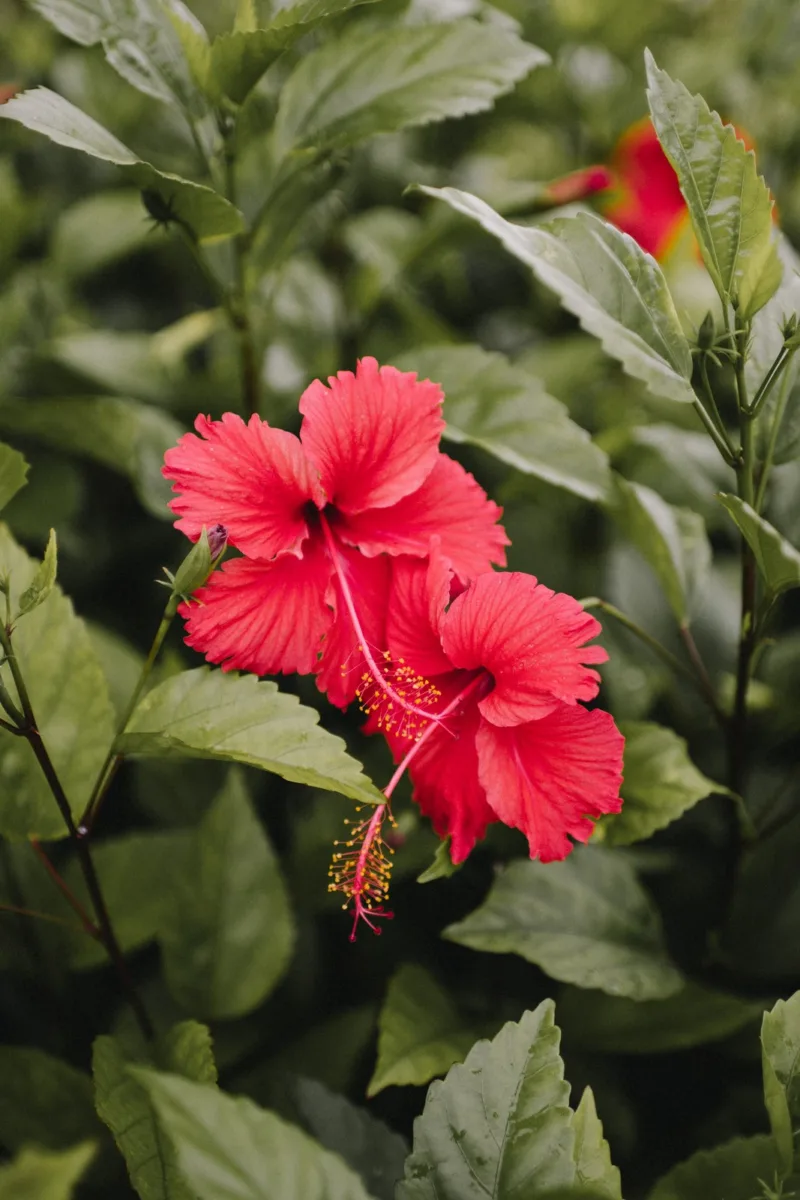
The Beauty and Flavor of Hibiscus
Let’s talk about the flavor profile of hibiscus (Hibiscus spp.). It offers a unique combination of tartness and sweetness, making it a versatile ingredient that can be used in both savory and sweet dishes. The floral notes add a delightful aroma and a touch of elegance to any dish.
Hibiscus: Not Just a Pretty Flower
Hibiscus is not only pleasing to the eye but also packed with health benefits. It is rich in antioxidants and vitamin C, which can boost your immune system and promote overall well-being. Additionally, hibiscus has been found to have anti-inflammatory properties and may help lower blood pressure.
Now that you know the goodness hibiscus brings to the table, let’s explore some exciting ways to incorporate it into your meals!
- Hibiscus Tea: One of the most popular ways to enjoy hibiscus is by brewing it into a refreshing tea. Simply steep dried hibiscus petals in hot water for a few minutes, strain, and enjoy. You can add a squeeze of lemon or a hint of honey to enhance the flavors.
- Hibiscus-Infused Cocktails: Take your mixology skills to the next level by creating hibiscus-infused cocktails. Add a splash of homemade hibiscus syrup or muddle fresh hibiscus petals with your favorite spirits for a vibrant and refreshing drink.
- Hibiscus Salad Dressing: Elevate your salads with a homemade hibiscus dressing. Blend hibiscus petals, olive oil, lemon juice, honey, and a pinch of salt for a tangy and slightly sweet dressing that will take your greens to new heights.
Where to Find Hibiscus
Now that you’re excited to experiment with hibiscus in your kitchen, you might be wondering where to find it. Dried hibiscus petals can be easily found in specialty stores or online. Alternatively, you can grow your hibiscus plant and harvest the petals when they bloom.
8. Dandelion

The Health Benefits of Dandelion
Dandelions are more than just pesky weed. They are a nutritional powerhouse! Dandelion greens are loaded with vitamins A, C, and K, as well as minerals like calcium and iron. They are also a great source of antioxidants that help fight off free radicals in the body.
Not only are dandelions packed with nutrients, but they also offer a range of health benefits. These include supporting liver function, aiding digestion, promoting healthy skin, and even boosting weight loss. Incorporating dandelion into your diet can improve your overall well-being and add a unique and delicious twist to your meals.
Culinary Ideas for Dandelion
Now that you know about the incredible health benefits of dandelion, it’s time to explore the culinary possibilities. Dandelion greens can be used in a variety of ways, adding a delightful bitterness to your dishes. Here are a few ideas to get you started:
- Dandelion Salad: Toss together fresh dandelion greens, cherry tomatoes, sliced cucumbers, and a tangy vinaigrette for a refreshing and nutritious salad.
- Dandelion Pesto: Blend dandelion greens, garlic, pine nuts, Parmesan cheese, and olive oil to create a flavorful pesto sauce. Use it as a spread on sandwiches or as a topping for pasta dishes.
- Sautéed Dandelion Greens: Heat some olive oil in a pan and sauté dandelion greens with garlic and red pepper flakes until wilted. Season with salt and pepper for a simple and tasty side dish.
Foraging and Preparing Dandelion
If you’re feeling adventurous, you can even try foraging for dandelions in your backyard or local parks. Just make sure to avoid areas that have been treated with chemicals. When harvesting dandelion greens, choose young leaves as they are less bitter. Rinse them thoroughly to remove any dirt or insects.
Once you have your dandelion greens, it’s time to prepare them for cooking. Trim off the tough stems and chop the leaves into bite-sized pieces. Blanching the greens in boiling water for a minute or two can help reduce their bitterness. After blanching, you can use them in any of the culinary ideas mentioned earlier.
9. Nasturtium

When it comes to adding a touch of vibrancy to your culinary creations, look no further than the stunning nasturtium. With its vibrant colors and peppery flavor, nasturtium is not only a feast for the eyes but also a delightful addition to your palate.
The Many Uses of Nasturtium
Nasturtium leaves, flowers, and even seeds are all edible and can be used in a variety of dishes. Their peppery taste adds a unique twist to salads, soups, and sandwiches. The bright flowers make for an eye-catching garnish, while the leaves can be used as a substitute for spinach or basil in pesto.
If you’re feeling adventurous, you can even pickle the immature seeds to create a tangy and flavorful condiment. The possibilities are endless when it comes to using nasturtium in your kitchen!
Simple and Delicious Nasturtium Recipes
Looking for some inspiration to get started with nasturtium? Here are two simple yet delicious recipes:
Nasturtium Salad
Ingredients:
- Fresh nasturtium leaves and flowers
- Mixed salad greens
- Cherry tomatoes
- Cucumber
- Red onion
- Feta cheese
- Your favorite dressing
Instructions:
- Wash and dry the nasturtium leaves, flowers, and salad greens.
- Chop the cherry tomatoes, cucumber, and red onion.
- Toss all the ingredients together in a bowl.
- Crumble feta cheese on top.
- Drizzle your favorite dressing and enjoy!
Nasturtium Pesto
Ingredients:
- 2 cups nasturtium leaves
- 1/2 cup pine nuts
- 1/2 cup grated Parmesan cheese
- 2 garlic cloves
- 1/2 cup olive oil
- Salt and pepper to taste
Instructions:
- Wash and dry the nasturtium leaves.
- In a food processor, combine the nasturtium leaves, pine nuts, Parmesan cheese, garlic cloves, salt, and pepper.
- Slowly drizzle in the olive oil while blending until the pesto reaches your desired consistency.
- Serve with pasta, spread on sandwiches, or use as a dip for vegetables.
- Enjoy the unique flavor of nasturtium!
Nasturtium is not only a visually stunning flower but also a versatile ingredient that can elevate your culinary creations.
10. Daylilies
These vibrant and versatile flowers are not just pretty to look at but also make for a delicious addition to your culinary adventures.

Edible Varieties of Daylilies
It’s important to note that not all daylilies are edible. We recommend sticking to the Hemerocallis genus, as some other varieties may be unsafe for consumption.
The most commonly eaten variety is the Hemerocallis fulva or the orange daylily, which is often found in gardens and is easily identifiable by its vibrant orange flowers. However, there are other edible species and hybrids that come in a range of colors, including yellow, pink, and even purple!
Preparing Daylilies for Consumption
Once you have identified and gathered your edible daylilies, it’s time to prepare them for cooking. Start by removing the bitter-tasting pistil and stamen from the center of the flower. This can be easily done by gently pulling them out with your fingers. Rinse the flowers under cold water to remove any dirt or bugs, and pat them dry with a clean kitchen towel.
Now, your daylilies are ready to be incorporated into various delectable dishes!
Delicious Daylily Recipes
1. Daylily Salad
For a refreshing and colorful salad, combine fresh daylily petals with mixed greens, cherry tomatoes, cucumber slices, and a tangy vinaigrette dressing. The petals add a subtle crunch and a mild, slightly sweet flavor to the salad. It’s a perfect dish for a light lunch or as a side at dinner parties.
2. Stuffed Daylilies
This recipe takes daylilies to a whole new level! Carefully stuff the blossoms with a tasty filling made of cream cheese, herbs, and spices. Once stuffed, lightly coat the blossoms in a mixture of breadcrumbs and your favorite seasonings. Bake them in the oven until golden brown and voila – a mouthwatering appetizer that will impress your guests!
Daylilies are not just a feast for the eyes, but also a delightful addition to your culinary repertoire. From salads to stuffed blossoms, there are countless ways to enjoy these versatile flowers.
11. Lemon Balm
When it comes to culinary herbs, lemon balm is often overlooked. However, this vibrant herb has a plethora of benefits that can enhance your overall well-being.
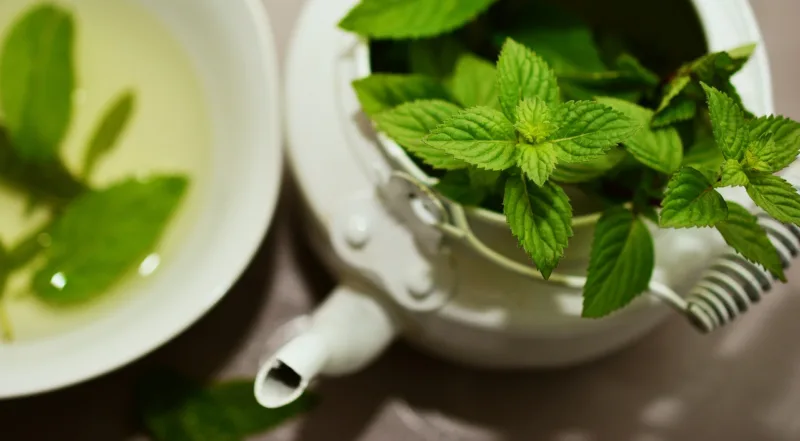
The Health Benefits of Lemon Balm
Lemon balm, also known as Melissa officinalis, is a member of the mint family and has been used for centuries for its medicinal properties. Rich in antioxidants and essential oils, lemon balm offers several health benefits:
- Calms the Mind: Lemon balm has a soothing effect on the nervous system, making it an excellent herb for reducing stress and anxiety. It can help you relax and promote a sense of calmness.
- Supports Digestive Health: If you suffer from digestive issues such as bloating, indigestion, or stomach cramps, lemon balm can provide relief. It has carminative properties that help soothe the digestive tract and ease discomfort.
- Boosts Immunity: The high concentration of antioxidants in lemon balm strengthens the immune system and protects the body against harmful pathogens. It can help reduce the frequency and severity of colds and flu.
How to Incorporate Lemon Balm into Your Diet
Lemon balm has a refreshing citrus flavor with a hint of mint, making it a versatile herb for various dishes. Here are a few creative ways to incorporate lemon balm into your daily diet:
- Herbal Infusion: Steep a handful of fresh lemon balm leaves in hot water to make a soothing herbal tea. Add a drizzle of honey for extra sweetness.
- Flavorful Salads: Chop fresh lemon balm leaves and add them to your favorite salads for a burst of flavor. Pair it with fruits like strawberries or citrus for a refreshing twist.
- Culinary Delights: Use lemon balm as a seasoning in your dishes to add a citrusy and herbaceous taste. It pairs well with fish, chicken, and vegetables.
- Herbal Infused Oil: Infuse olive oil with lemon balm leaves to create a fragrant and flavorful oil that can be used for cooking or as a salad dressing.
Lemon balm is a versatile herb with numerous health benefits. From its calming properties to its immune-boosting effects, incorporating lemon balm into your diet can have a positive impact on your overall well-being.
***
The Benefits of Growing Your Edible Garden
Aside from the sheer joy of discovering new flavors in your backyard, there are numerous benefits to growing your edible garden.
Freshness and Flavor
There’s nothing quite like the taste of freshly harvested produce. By growing your edible plants, you can enjoy a level of freshness and flavor that store-bought options simply can’t match.
Cost Savings
Not only will growing your edible garden provide you with a constant supply of fresh ingredients, but it can also save you money in the long run. Say goodbye to expensive trips to the grocery store for herbs and greens!
Unlocking the Hidden Delights
As you can see, the world of edible plants is full of surprises. Exploring beyond the traditional fruits and vegetables can open up a whole new world of flavors and textures, taking your culinary creations to new heights.
So, the next time you find yourself surrounded by nature’s bounty, take a closer look. You never know what hidden delights you might discover – waiting to be plucked, savored, and enjoyed.
